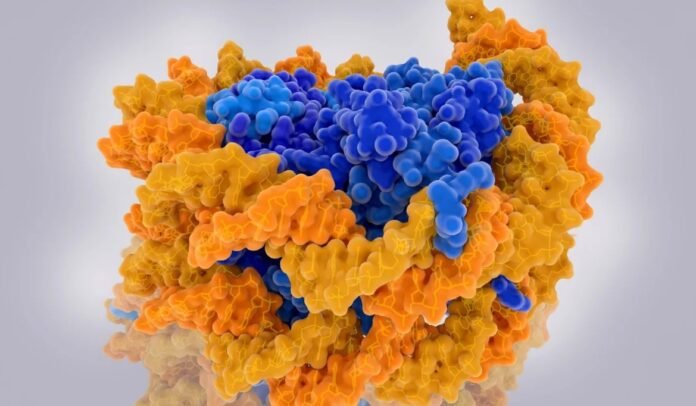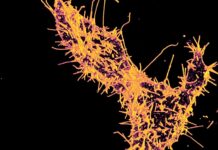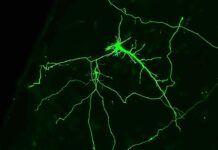The aging process is a complex biological phenomenon that is not yet fully understood. Scientists have long been fascinated by senescent cells, which cease cell division and undergo cryptic transcription – the production of RNA transcripts from sequences nested within individual genes. While the impact of these transcripts on health and longevity is not yet clear, their function in mammalian cells remains a mystery.
The Epigenetic Puzzle of Cryptic Transcription
Payel Sen, a molecular biologist at the National Institute on Aging, and her colleagues have taken a step closer to unraveling the cryptic transcription mystery. Their study sought to understand how epigenetic changes regulate cryptic transcription. They discovered that modified histones, the proteins around which DNA is tightly wound in a chromosome, loosen their grip on DNA, allowing the cryptic sites within genes to be spuriously transcribed.
The PRO-cap Technique: A Precise Nuclear Run-on Sequencing Method
The difficulty in distinguishing cryptic transcripts from other RNA transcripts using traditional RNA sequencing methods has been a hindrance to understanding their function. However, the researchers used a precision nuclear run-on sequencing technique called PRO-cap to determine the start site of transcription in DNA by sequencing the corresponding first few bases in the RNA. This technique uses biotin-labelled nucleotides added to growing RNA strands, abruptly terminating transcription. These biotin labels serve as markers that discriminate newly formed RNA from older, trimmed transcripts that could not be used to determine the transcription start site.
The Uniqueness of Cryptic Sites in Aging Cells
The team found that cryptic transcripts were produced at similar levels in both young and senescent cells, suggesting that cryptic transcription occurs throughout a cell’s life. Nonetheless, the researchers identified numerous cryptic sites that were unique to senescent cells that could have age-related functions. The team repeated the study in liver cells taken from mice and found that older mice had greater levels of cryptic transcription than young mice.
The Driving Forces of Cryptic Transcription in Senescent Cells
The team sought to determine if chemical modifications to histones that loosened their grasp on DNA could have primed these sites for transcription. They studied fragments containing cryptic sites and compared the levels of histone methylation, which winds up DNA and switches it “off” by making it unavailable for transcription, with the levels of histone acetylation, which unwinds DNA and allows transcription to occur. Senescent cells had more acetylated “on” histones and fewer methylated “off” ones, suggesting that histone modifications seemingly correlated with cell age expose cryptic sites that are normally hidden in young cells.
The Relevance of Cryptic Transcription to Aging and Longevity
The study’s findings have important implications for aging and longevity research. Understanding the functions of cryptic transcripts and their impact on aging cells could lead to new methods to prolong youthfulness. Sen and her colleagues plan to further investigate how and why these spurious transcripts are produced in senescent cells and their impact on the cell itself.
Unraveling the Mystery of Cryptic Transcription
Despite the progress made in understanding cryptic transcription, the functions of these transcripts remain unclear, and the possibility of detrimental consequences cannot be ruled out. Some researchers speculate that they could serve as truncated proteins or detrimental RNAs that may interfere with cellular processes.
Further Research to Uncover the Full Picture
Although the study sheds light on the mechanisms behind cryptic transcription in senescent cells, more research is needed to fully understand the process. Researchers need to confirm whether cryptic transcription occurs in animals as well, and if so, whether it affects different groups of cryptic sites in separate cell types. They also need to determine whether the cryptic transcripts interfere with membrane proteins in some way.
Epigenetic Erosion and Cryptic Transcription
The erosion of the epigenome at cryptic sites associated with aging in senescent cells could boost spurious transcription. Histone methylation decreased overall in senescent cells, but the team observed a specific pattern of increased methylation on histone 3, normally seen at the start sites of transcription at sequences known as promoters, providing further support that epigenetic changes drive cryptic transcription.
In conclusion, this study provides valuable insights into the mechanisms behind cryptic transcription in aging cells, highlighting the perplexing and complex nature of this phenomenon. With further research, scientists may be able to shed more light on the role that cryptic transcription plays in aging and longevity, potentially leading to new methods to promote healthy aging. However, there is still much to uncover regarding the function and impact of these spurious transcripts, as well as their potential risks. The bursty and varied nature of the writing in this article reflects the intricate and nuanced nature of the topic at hand, underscoring the complexity of cryptic transcription in aging cells.
Google News | Telegram
















